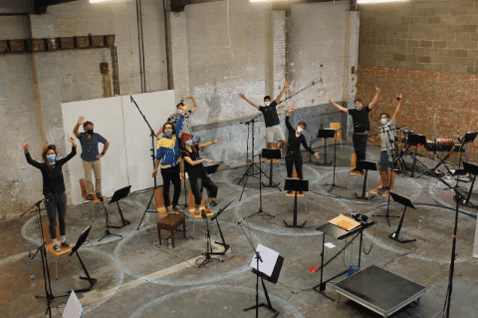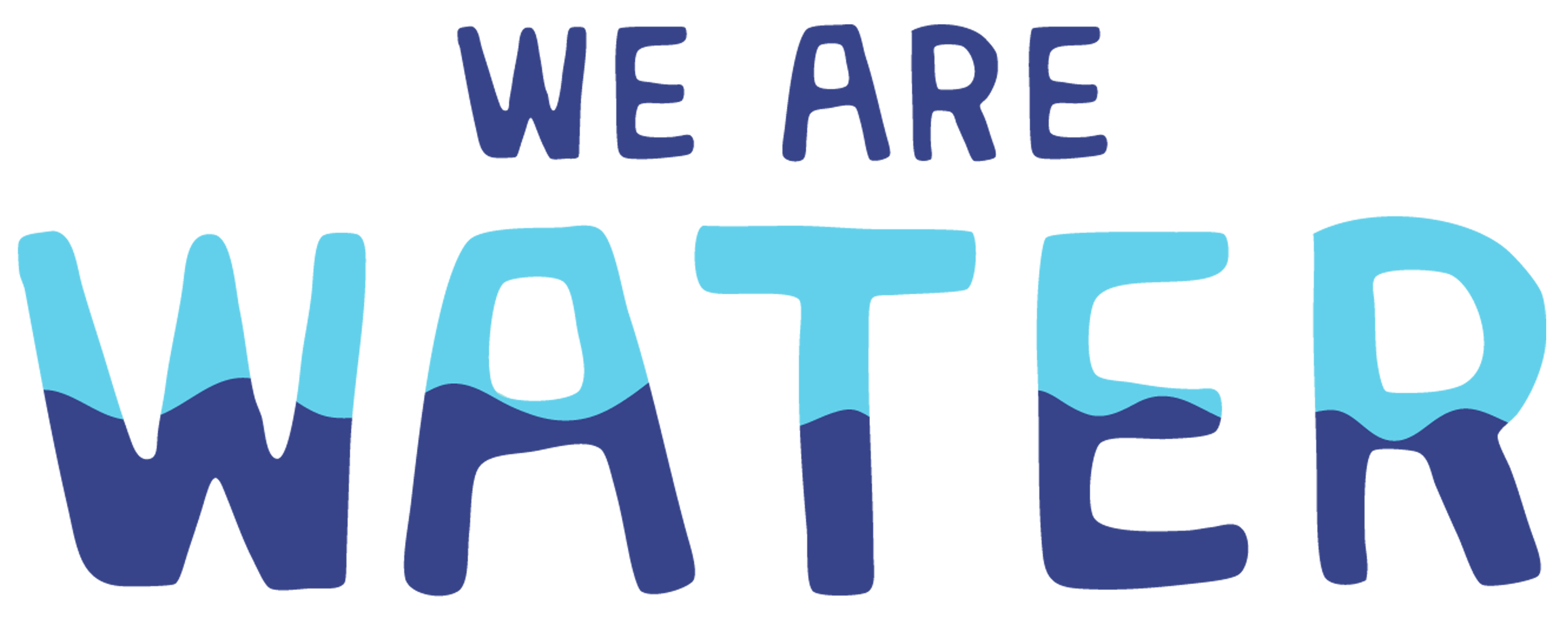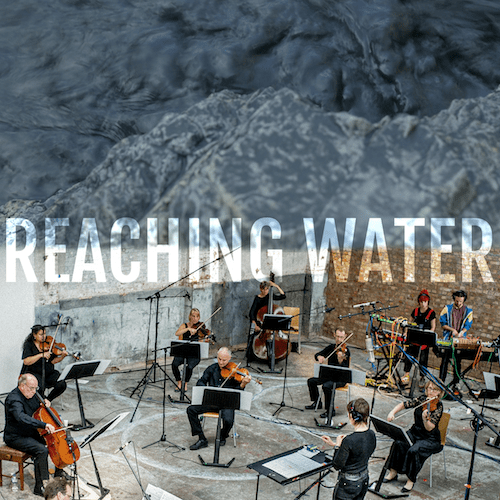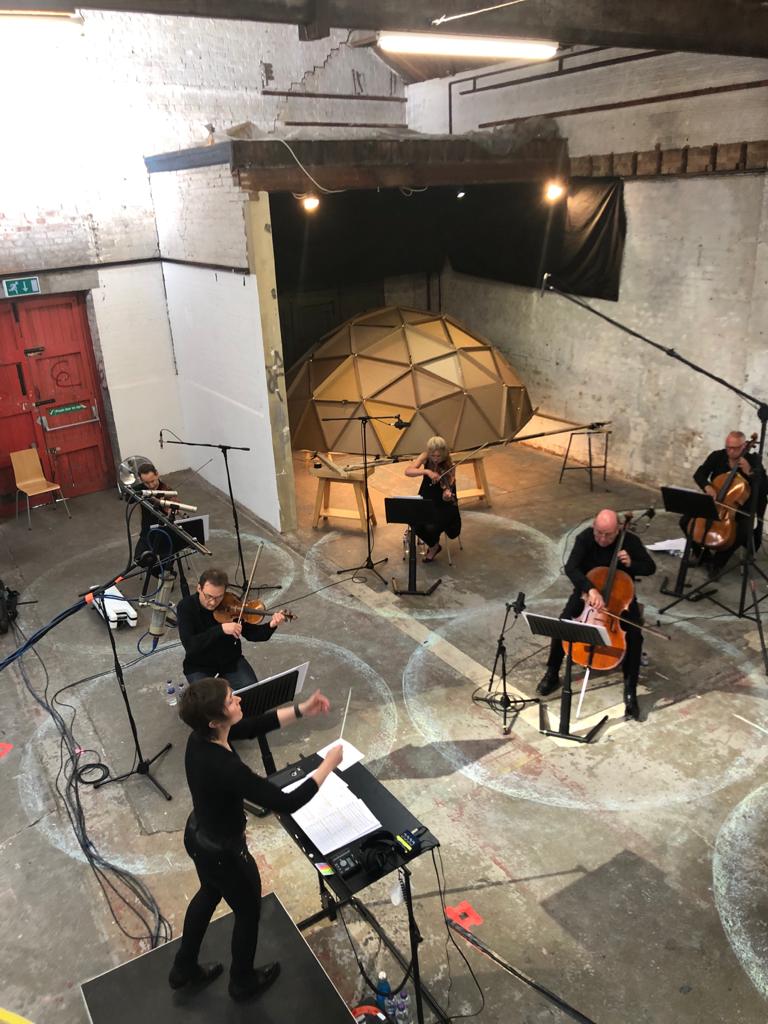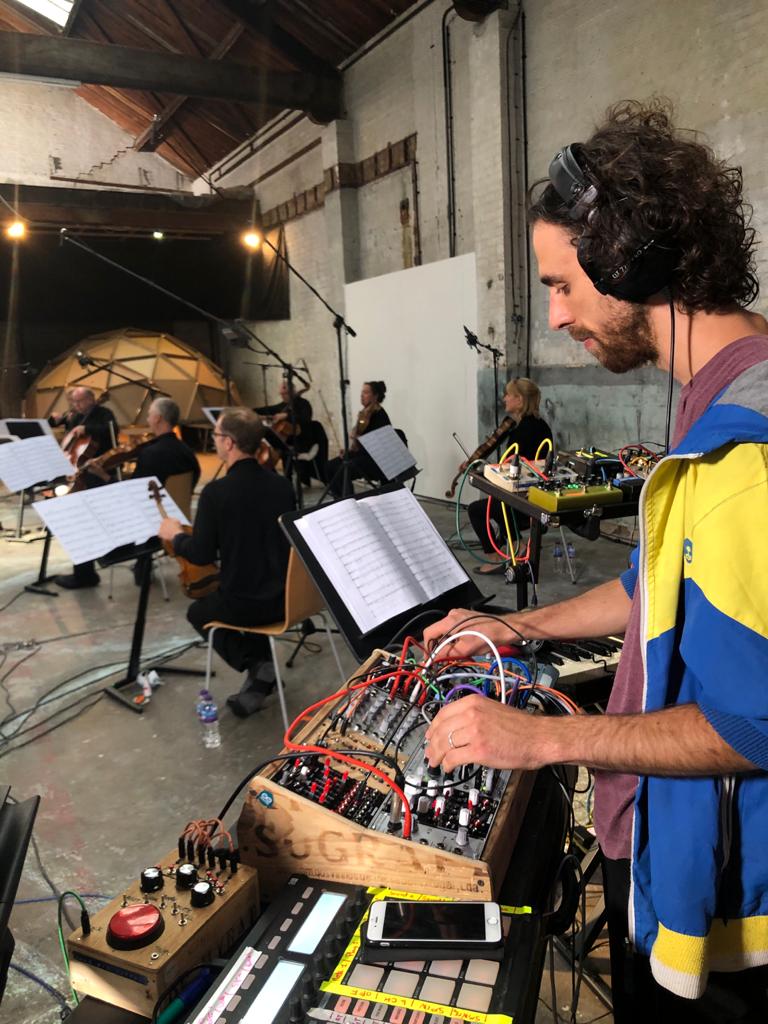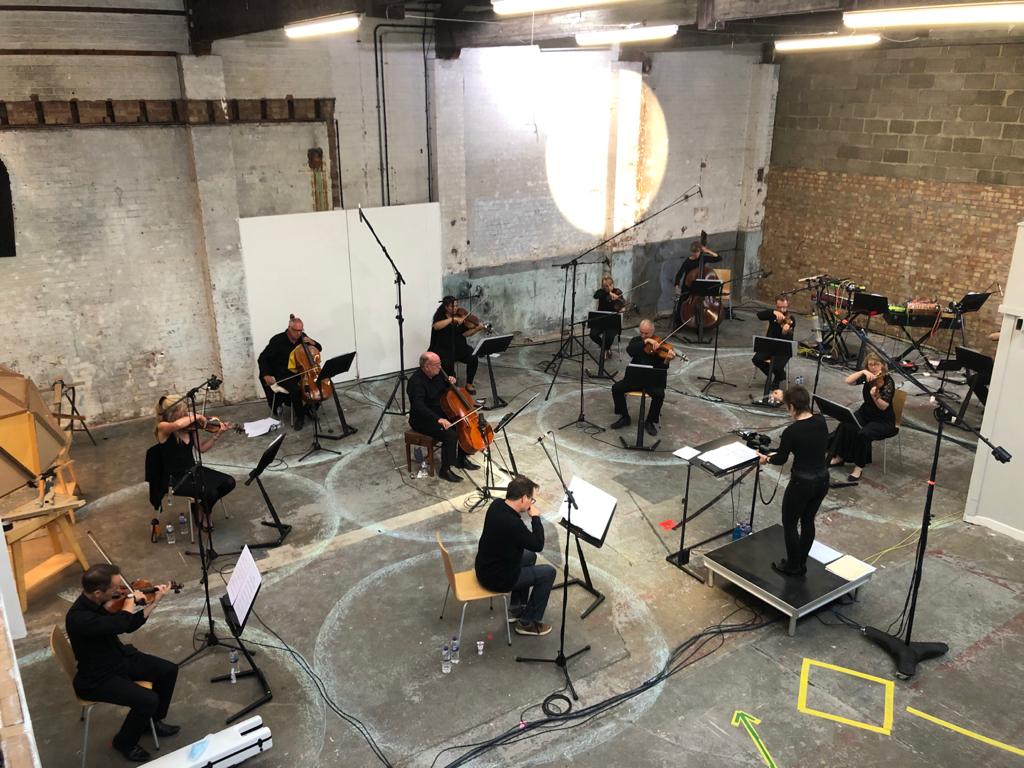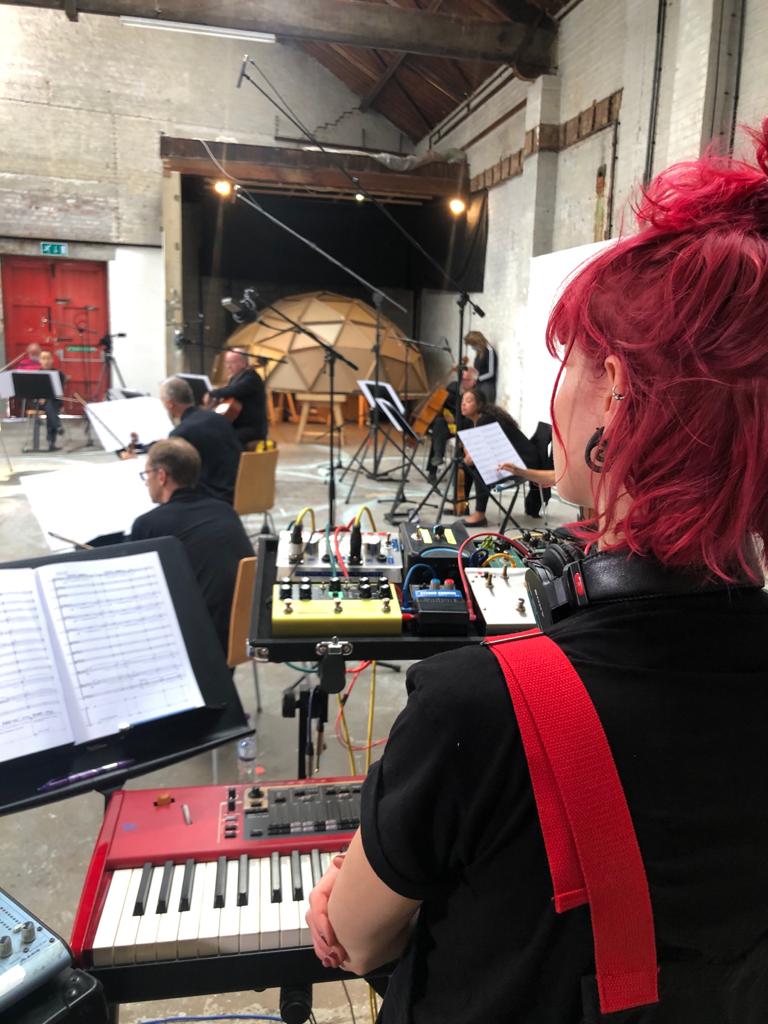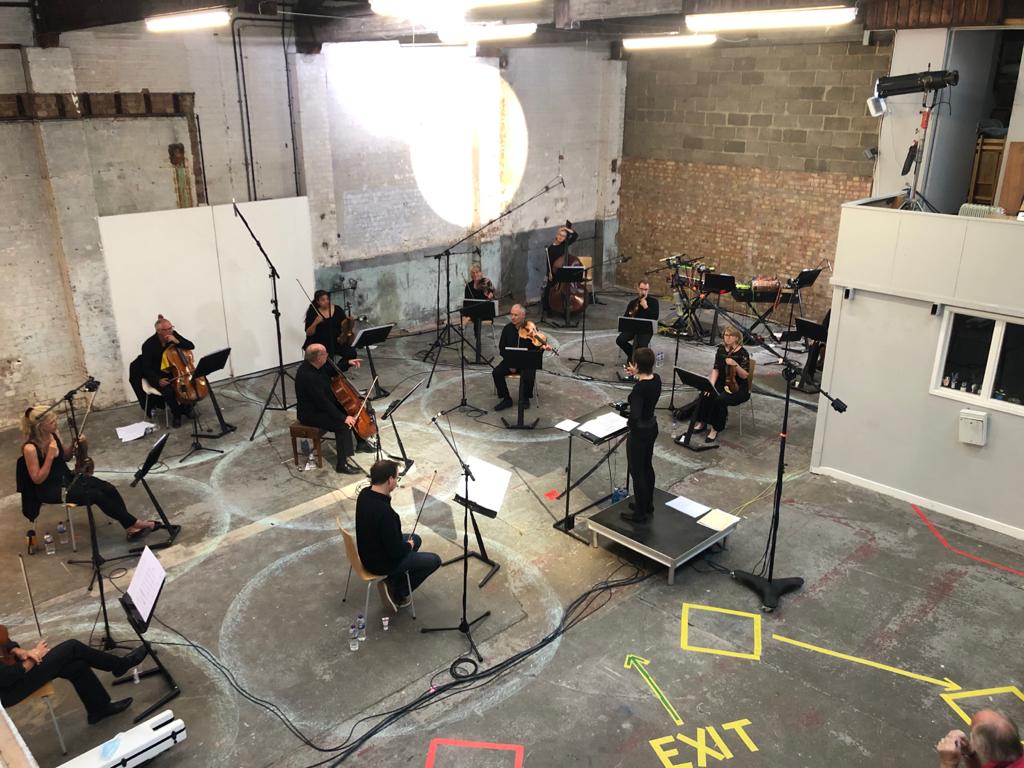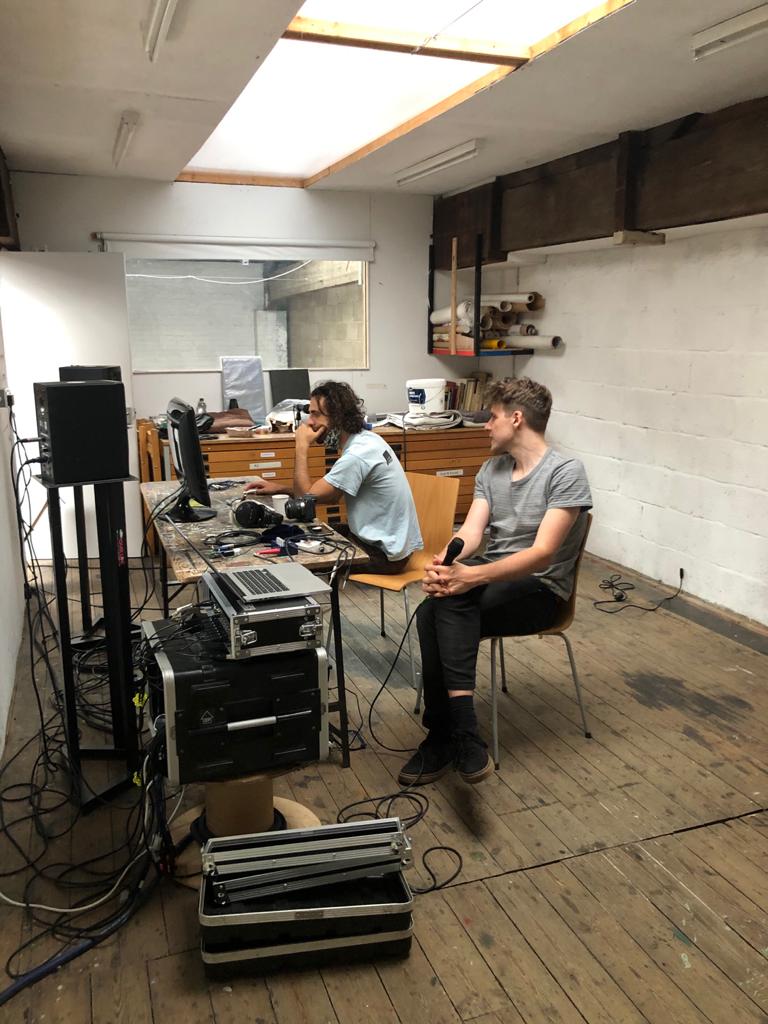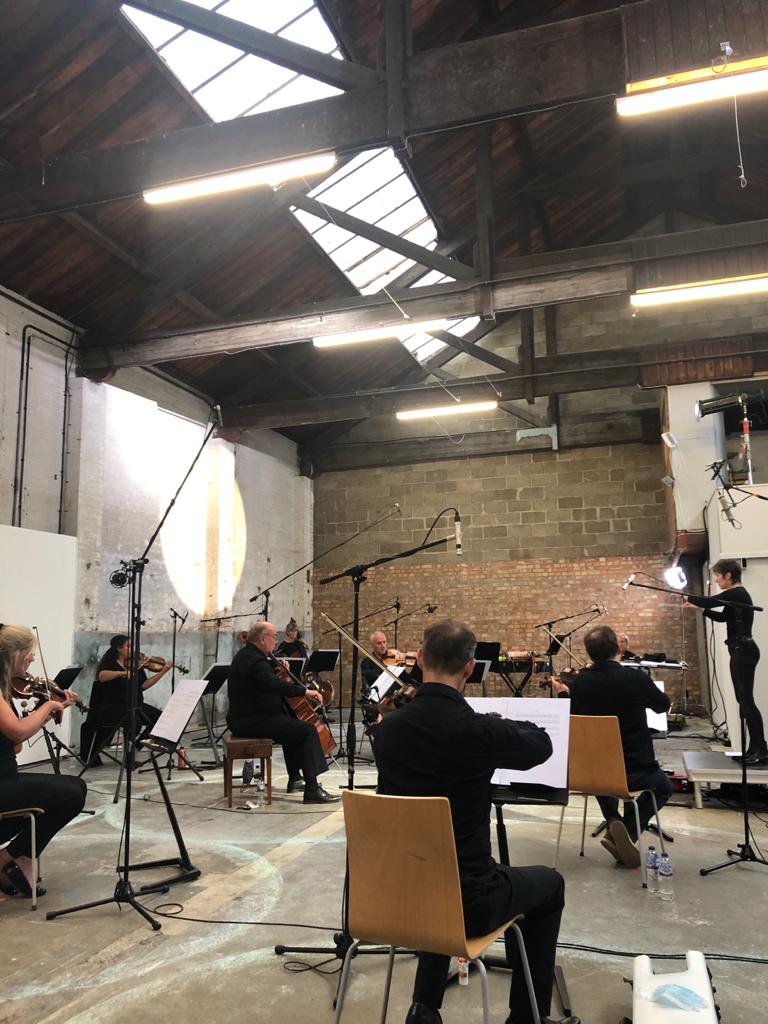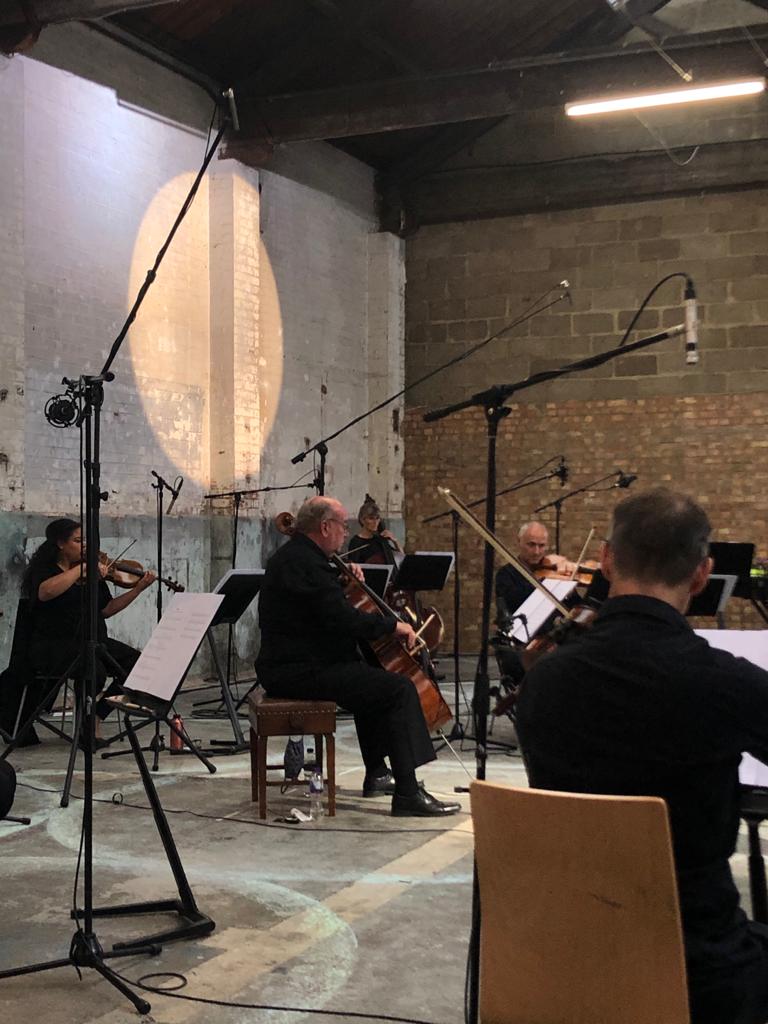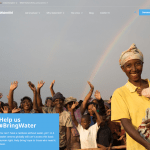Celebrating and challenging our relationship with water through music
We Are Water is series of new electro-orchestral compositions composed by Limpet Space Race that meld OSJ’s strings with researchers’ field recordings and the band’s experimental, DIY electronics, creating vivid and moving soundscapes that raise awareness about one of our greatest challenges of the 21st century.
We Are Water is a creative exploration of the sounds and science of water security.
We Are Water Compositions
Earth Flow (2019)
Reaching Water (2020)
click on the dots to read more…
The current commission Reaching Water is directed by OSJ’s Associate Conductor, Cayenna Ponchione-Bailey and draws on the research of water scientist Dr Catherine Grasham who leads social science research in the Awash River Basin in Ethiopia for REACH: Improving Water Security for the Poor, an international initiative led by the University of Oxford.
Designed for 2020’s unique pandemic environment, OSJ and Limpet Space Race recorded the new work in a socially distanced session in July at the OVADA warehouse in Oxford.
The online premiere of Reaching Water will take place on Sunday 25 October at 5pm.
Reaching Water flows on from the successful premiere of Earth Flow, also written by Limpet Space Race for OSJ and premiered by OSJ and conductor Cayenna Ponchione-Bailey at the Ashmolean Museum in May 2019. Earth Flow was a collaboration with Himalayas to Ocean and the Environmental Change Institute at the University of Oxford. Earth Flow was also recorded this summer as part of our Covid-19 We Are Water recording project and was released at the beginning of September.
Watch and listen to Earth Flow here!
Sunday 25th October 5pm on Facebook and YouTube LIVE
Join us for a sneak preview of the Reaching Water music video at our live streamed Watch Party and get the inside story behind its creation from Limpet Space Race, conductor Cayenna Ponchione-Bailey and one of our scientific collaborators, Alice Chautard.
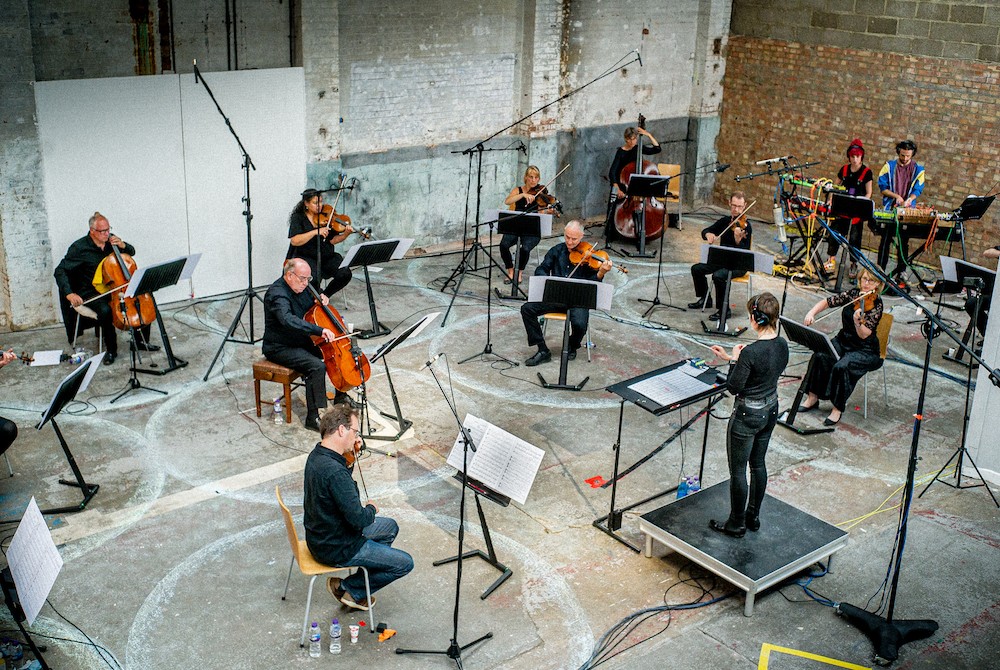
Cayenna Ponchione-Bailey
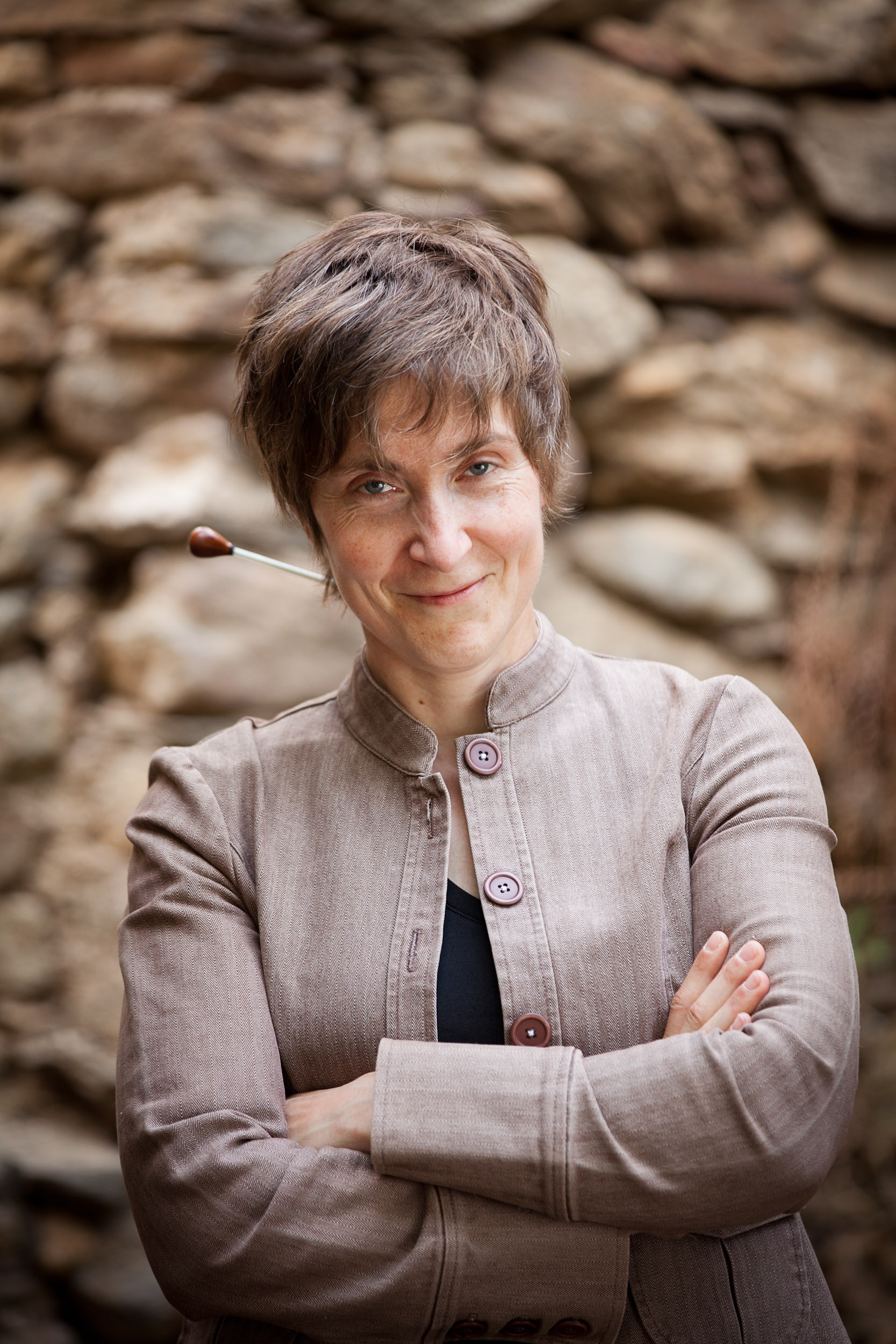
We interviewed Associate Conductor Cayenna Ponchione-Bailey about the story behind the We Are Water project and what it was like to record an orchestra during the coronavirus pandemic.
To be honest, it is about a lot of things simultaneously! But in a nutshell it is about raising awareness around issues of global water security and climate change through creative engagement with leading scientific research and artistic collaborations. Through orchestral music I believe we have an opportunity – and perhaps even a responsibility – to engage with pressing social and environmental issues through our work. The creation of new musical compositions is one of the many ways we can do that.
We Are Water is actually the second collaboration with Hannah Jacobs and Nikó O’Brien of Limpet Space Race, and follows on from the success of Earth Flow, a composition for string orchestra, live electronics and surround sound written by LSR and performed by the band and OSJ at the Ashmolean in 2019. Earth Flow was inspired by the Himalayas to Ocean project, an expedition in 2017 involving climate scientists from the University of Oxford and artists, including Nikó O’Brien, which charted the experiences of residents along the Gandaki river in Nepal and the impact of climate change on their lives. An important aspect of H2O’s endeavour was to use artistic media and collaborations to amplify residents stories and experiences, drawing attention to the global impacts of climate change. This really resonated with me and I wanted to get OSJ involved with this important work. Earth Flow was wonderfully successful and Hannah, Nikó and I began discussions about how to develop the collaboration between LSR and OSJ further. They came up with the idea of working toward a four-composition suite (an album) of new pieces, each engaging with a different piece of water research – We Are Water is now movement two!
Haha! It is true, probably most of my life I’ve been preoccupied with water in one way or another. In central Alaska, where I grew up, it is very common for people to live without running water, or with limited access to running water, and I certainly did for large portions of the 20+ years I lived there. ‘Hauling water’ – like so many places in the world – was part of everyday life, and I grew up extremely conscious about (and grateful for!) the water I consumed. As I learned more about the environmental, cultural and political complexities of global water security, I sought ways of leveraging my work with orchestras to bring awareness to these issues as well as invite people to reflect on their own relationship to water.
Actually, Dr Grasham’s work was brought to our attention by a photographer colleague, Alice Chautard, who had also been part of the H2O expedition. As a social scientist, Dr Grasham’s research recognises that water security is not just a matter of finding technological fixes, but that social, cultural and political factors are an essential part of the long-term solutions.
That’s a very good question. As a creative team LSR brings together an exciting combination of classical training, experimental electronics and a wide range of pop and global music influences. In many respects it is very much like any other commission, but one that has been very collaborative in terms of exchanging ideas and exploring possibilities. It has been incredibly rewarding to work with such wonderfully imaginative musicians. The sound worlds they have created I could not have imagined at the beginning of the project. Just wait till you hear the final recording. There are moments which are just sublime – packing a powerful emotional punch to remind us how important water is to the very fabric of our being. The string textures go from eerie to lush, breaking out in to joyful melodies and waves of sound. The synth transformation of the strings is incredibly organic and seamlessly interwoven into the beautiful string sound of OSJ’s musicians. Water sounds from the contributions made by people from all over the globe are mixed into the musical narrative, soothing and uplifting like a cool glass of water or the gentle lap of ocean waves. I genuinely love this piece.
Wild, wonderful and weird! After so many months of lockdown, it was the first time the band was back together and it was just so nice to see everyone. Health and safety was the first priority and social distancing in the orchestra layout was essential. This meant that many of the things we rely on when playing together as an orchestra were not there for us to rely on in the same way. It is a fallacy that musicians play together simply by following the gestures of the conductor – they need to see and hear each other to truly play together and that is hard when everyone is two-metres apart. Don’t get me wrong, conducting gestures can help (as well as really make a muddle of things when done poorly), but all of the information musicians are used to picking up from peripheral vision and hearing each other, was much harder to obtain in this environment. Luckily for us, we have some truly top notch players and despite the challenges, they created an incredible sound. There was also a lighting crew and a video crew as it will actually be a music video as well as a sound recording, so there was a lot going on on the day. For me, it was great to be back at work doing the thing I love. I’d do it again tomorrow if we could!
We hope to be able to announce the streaming premiere soon, but we’re aiming for the end of September/beginning of October. It will be available for streaming and downloading after that.
Earth Flow (2019)…
The piece, Earth Flow, responds to Himalayas to Ocean, a documentary research project recounting stories of climate change along the Gandaki river in Nepal. It focuses on themes of erosion, landslides and change. In many places across Nepal, landslides are becoming more common to increased glacial melt and intense rains. This is predicted to worsen as the climate changes further.
“We hope the collaboration will emotionally engage people and encourage them to think about the connections between their lifestyles and the changing climate patterns affecting other communities. The project gives some real-life context and stories to this crisis”. Alice Chautard, co-founder of Himalayas To Ocean.
The project’s sound recordist was Limpet Space Race’s Nicholas O’Brien, and the piece includes his 5:1 surround field recordings of wind, water, landslide and river, with video footage captured and paired with the music, by Ross Harrison.
The original version, premiered by conductor Cayenna Ponchione-Bailey and the Orchestra of St John’s in 2019 at the Ashmolean Museum in Oxford (part of OSJ’s popular Ashmolean Proms series) combines string orchestra with live sampling, electronics and expedition field recordings, performed through a surround-sound speaker array using LSR’s self-built Max MSP programme. The release version was recorded and filmed at Oxford’s OVADA warehouse in July 2020, an innovative choice to provide a spacious, industrial setting for a socially-distanced session.
- Read more about the composition of Earth Flow online at Headphone Commute.
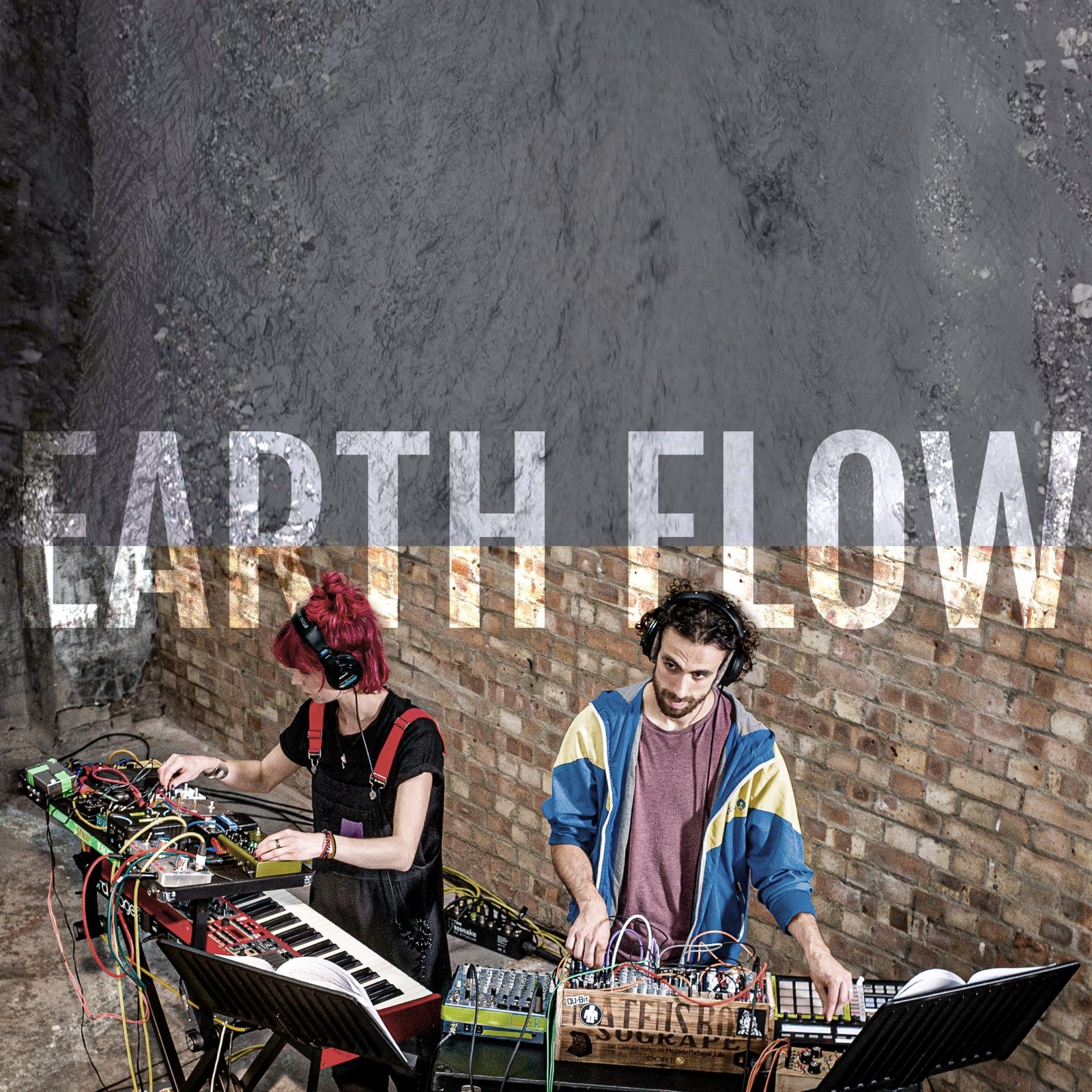
Watch and listen to Earth Flow here…
Reaching Water (2020)…
Release date 23.10.2020
The collaborative piece draws on water security research from University of Oxford’s Dr Catherine Grasham in Ethiopia’s Awash River Basin. Inspired by stories from her interviewees, Limpet Space Race’s composition explores the increasingly long journeys faced by many people around the globe, as climate change makes their access to water more difficult. The piece takes the listener through hot, dry textures into the lush relief of reaching water. The string orchestra interweaves with modular synth manipulation and a sample from one of Dr Grasham’s interviews with a farming community from Ethiopia’s Fentale District which translates ‘You have to travel long distances to find water, it’s very tiring’. The piece also includes samples of water sounds submitted in the response to the project, encouraging participants to think about their own water consumption, and the connection between climate change and global water security.
Supported by Arts Council England, ‘Reaching Water’ was designed to allow orchestral music creation in 2020’s unique pandemic environment. Recorded and filmed at Oxford’s OVADA warehouse, an innovative choice to provide a spacious, industrial setting for socially-distanced session. The award-winning production team included composer Toby Young, cinematographers Ross Harrison and Siobhán Cox and Parisian design agency, Bangers and Mash. The music video is set for release on October 23rd 2020.
Conductor Cayenna Ponchione speaks about the project: ‘Through orchestral music I believe we have an opportunity – and perhaps even a responsibility – to engage with pressing social and environmental issues through our work. The creation of new musical compositions is one of the many ways we can do that. As a social scientist, Dr Grasham’s research recognises that water security is not just a matter of finding technological fixes, but that social, cultural and political factors are an essential part of the long-term solutions. It has been incredibly rewarding to work with such wonderfully imaginative musicians. The sound worlds they have created I could not have imagined at the beginning of the project. There are moments which are just sublime – packing a powerful emotional punch to remind us how important water is to the very fabric of our being.’
Water Sounds Sent To Us
A massive thank you to everyone who sent in sound recordings! We were very excited to receive them from all over the world including: Bath, Hawaii, Zambia, Menorca, New Zealand, York, Alaska, New York, London and even from here in Oxford. Apparently water sounds lush wherever it is! They have ALL been used in the final version of Reaching Water.
This video is a compilation of all the sounds that were recorded and submitted to us. Worth a listen to the end…
Synth Magic!
While the orchestra were busy laying down the string sounds during the recording session. Nikó was busy live processing the orchestra sounds through a DIY synth module. After the recording session Nikó is now in action working on the next creative phase of the project.
Behind the scenes…
Interview with violinist Jake Rea about recording We Are Water
Orchestra of St John’s violinist Jake Rea talks about the joys and challenges of recording We Are Water at the OVADA warehouse in Oxford during the pandemic. We get a bonus tour of his gorgeous garden which has benefited from extra attention these past summer months…
In this short educational video (for all ages!) Dr Catherine Grasham explains what water security is and how people experience it differently across the globe.
Dr Grasham leads the social science research in the Awash River Basin in Ethiopia for ‘REACH’, a global research programme to improve water security for millions of poor people in Asia and Africa, led by the University of Oxford.
More Educational Resources to Explore!
What is a Water Footprint?
The water footprint measures the amount of water used to produce each of the goods and services we use.
The Water Footprint Network explains why it’s important to know our water footprint and provides interactive tools to explore how much water it takes to grow or make individual products and calculate our own individual water footprint.
Who has Access to Clean Water?
Did you know that…
1 in 10 people around the globe do not have access to clean water.
2 in 5 people lack hand washing facilities at home.
Learn more at WaterAid.org/uk
Podcast with Dr Catherine Grasham
on Water Security in Ethiopia
Dr Catherine Grasham in conversation with Associate Conductor, Cayenna Ponchione-Bailey. Discussing what it means to be a social scientist working on water security in East Africa.
coming soon…
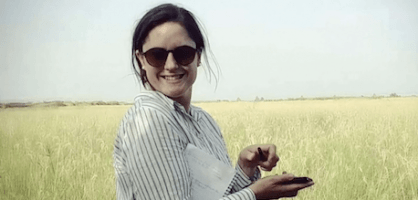

OSJ and Limpet Space Race would especially like to thank OVADA for the use of their wonderful warehouse for the recording of We Are Water on 23 July 2020!

